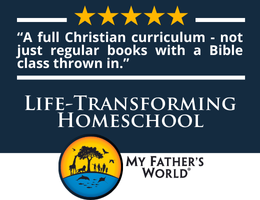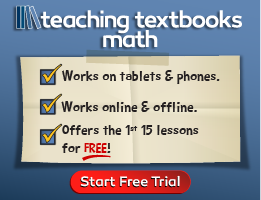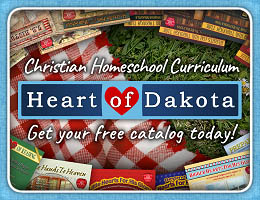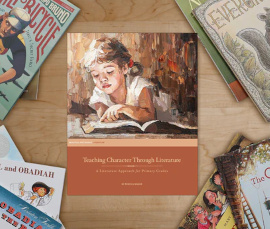Teaching Character Through Literature: A Literature Approach has two separate guides, one for kindergarten through third grade and the other for grades four through six. The first is subtitled A Literature Approach for Primary Grades, and the second is A Literature Approach for Primary and Intermediate Grades. Both serve as teacher guides for using real books to teach biblically based character traits. The author of both guides, Rebecca Manor, provides brief explanatory notes at the beginning of each.
Beautiful Feet Books sells literature packs for both levels, but you should be able to borrow most of the books from the library.
Primary Grades
The younger level of Teaching Character Through Literature uses 12 picture books and the Bible. The course is presented in a 61-page PDF teacher guide and is designed around the first three of the fruits of the Spirit (Galatians 5: 22-23): love, joy, and peace. Page 4 of the teaching guide says,
Reading through beautiful stories is one of the most effective ways to help children understand character, the integration of belief and action that is central to living a good life. Guided by our faith in God and the example of Jesus, our lives are meant to reflect our Creator’s character.
The teacher guide divides the study’s 12 lessons into three parts, focused on love, joy, and peace, respectively. Each part uses four picture books, one per lesson. Those books are:
- The Creator and You by Jordan Raynor
- Extra Yarn by Mac Barnett
- Before There Was Mozart by Lesa Cline-Ransome
- What is Given from the Heart by Patricia C. McKissack
- The Relatives Came by Cynthia Rylant
- This Way, Charlie by Matthew Cordell
- The Seven Silly Eaters by Mary Ann Hoberman
- The Name Jar by Yangsook Choi
- Obadiah the Bold by Brinton Turkle
- Rachel and Obadiah by Brinton Turkle
- Evergreen by Matthew Cordell
- Bartali’s Bicycle by Megan Hoyt
You will also use a children’s Bible storybook and a complete Bible. Four children’s Bible storybooks are recommended, and page numbers from them are included in the lesson plans. You can use another version if you wish.
For each lesson, you will read one or more passages from scripture, read the picture book, use the discussion prompts from the teacher guide, and complete Exploration Activities and Actions. Two Bible verses for memorization are included for each lesson. A list of “Extra Recommended Titles” included in each section suggests several more picture books you might also read along with the four lessons.
While it's possible to speed through the course in just a day or two per lesson, the teacher guide recommends spreading the study out over 24 weeks or more, and there's plenty of material to make that practical.
Discussion prompts for each lesson relate to the scripture and picture book readings and also stretch beyond to expand and apply biblical principles. For example, among the nine discussion prompts for the second lesson on page 14 are these two:
Annabelle’s knitting was a gift, just like your creativity is a gift from God. Does God ever run out of his creativity?
Can you ever run out of the gifts that God gave you? In the last lesson, you named some things that you believe were part of the imago Dei, or image of God, in you. Do you remember what those were? Are those things you can run out of?
To get the most from this study, you should read through each book several times, using just a few of the discussion prompts each time and allowing time for children to ponder the ideas presented.
Exploration Activities and Actions are hands-on ways to apply what was read and discussed. For instance, the third lesson focuses on using our gifts to bless others, with a special focus on music. In a Musical Gift Parade, children, along with other family members, share the gift of music with each other. The fourth lesson, based on the book What is Given from the Heart, describes a Family Giving Project where children practice “giving from the heart.” Additional discussion questions are often included within the Exploration Activities and Actions to help children make connections from the lesson to the activity or action.
You will need some craft and household supplies, along with food and cooking ingredients for some activities. Parents need to plan ahead to have the supplies on hand, as well as any extra children’s books you decide to use.
While the study is designed for children in kindergarten through third grade, it should be easy to include those younger and older to some extent, and some activities really involve the entire family.
Intermediate Grades
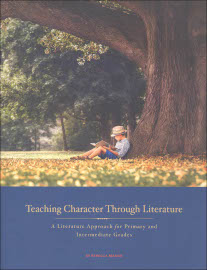 For the intermediate grades, Manor provides her annotated lists of favorite authors and favorite titles, followed by 50 lessons. The books used for these lessons are:
For the intermediate grades, Manor provides her annotated lists of favorite authors and favorite titles, followed by 50 lessons. The books used for these lessons are:
The Whipping Boy by Sid Fleischman
Fables by Arnold Lobel
The Hundred Dresses by Eleanor Estes
The Family Under the Bridge by Natalie Savage Carlson
Call it Courage by Armstrong Sperry
The Selfish Giant by Oscar Wilde
The Happy Prince by Oscar Wilde
A Gathering of Days by Joan W. Blos
Benjamin Franklin by Ingrid and Edgar D’Aulaire
Caddie Woodlawn by Carol Ryrie Brink
The Door in the Wall by Marguerite de Angeli
The Little Prince by Antoine de Saint-Exupery
The Green Ember by S.D. Smith
Most of these books for the intermediate grades will take more than one sitting to read, and the lessons break down the reading with assignments for specific pages or chapters for each lesson. One exception is the final lesson, which leaves it up to you to determine the pacing for reading The Green Ember.
The intermediate lessons are not always dependent upon direct scripture connections. For example, Lesson 29 is one of four lessons for the book Benjamin Franklin. The other four lessons include specific scripture verses, but the single question for this lesson reads: “Consider what it means to live a life of service and good citizenship. How did Franklin accomplish this?” For the short fables that are interspersed between the longer books, the lesson plans say only, “Discuss the morals at the end of each fable.” Even though some of the questions seem to serve as comprehension questions, they all point toward actions or thoughts that reveal positive or negative character traits.
Toward the end of the book, Manor includes two more lists: a list of her favorite books that adapt Bible stories for children and a list of books for further reading by parents and teachers. The last four pages of the book have decorated Bible memory-verse cards that can be cut out and used by students.
Parents or teachers can select from the lessons rather than using all of them, although I particularly like the flow of lessons for the intermediate grades that intermixes short fables and a few short books with lengthier books.
Summary
This scripture-based approach to character training helps children learn that acting virtuously is not always easy, and there are temptations to do the opposite. In addition, helping children recognize that we are all made in the image of God makes it easier for them to understand the requirement that we exhibit love for one another in all our actions.

